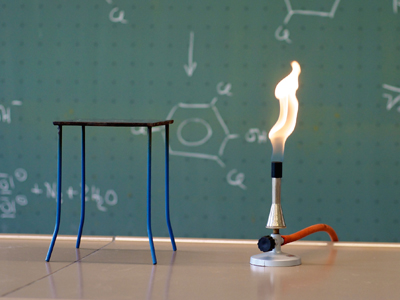
The flame test is used to find out what metal ion (cation) is present in a compound.
Analysing Substances
Analysing substances is a major part of GCSE Chemistry. This is the first of three quizzes on the topic and it takes a look at some of the many methods which are used in analytical testing.
Finding out which elements are present in a substance can be helpful to scientists in many fields, for example forensic science, hospitals and food science. Current methods used by professional scientists for analysing substances are very quick, extremely accurate and ultra-sensitive. There are, however, some disadvantages too. The machines tend to be extremely expensive, can only be used by highly trained operatives and a known result is required for comparison. Thankfully, not all methods of chemical analysis rely on machines to get the job done! There are many analytical tests that you can carry out which enable you to find out what is in a chemical.
Ready for more?
not all...
quizzers. Try to win a coveted spot on our Hall of Fame Page.







